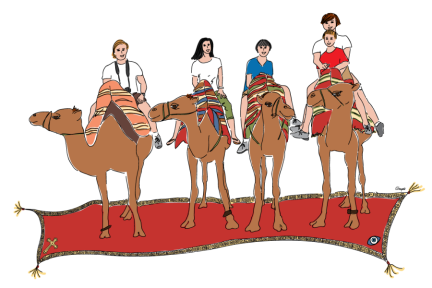My friend went to Antarctica several years ago on a research trip.  I remember how excited many of us were when he returned and shared fascinating information with us. I knew very little about Antarctica at the time and was trying to envision what his arrival on this remote continent was like. I remember asking him, “I know there’s not a passport entry, etc. there but who is waiting for you when you arrive??” He looked at me with a pause and said, “Penguins!” We both started laughing at this exchange. I interviewed him about this amazing trip.
I remember how excited many of us were when he returned and shared fascinating information with us. I knew very little about Antarctica at the time and was trying to envision what his arrival on this remote continent was like. I remember asking him, “I know there’s not a passport entry, etc. there but who is waiting for you when you arrive??” He looked at me with a pause and said, “Penguins!” We both started laughing at this exchange. I interviewed him about this amazing trip.

Why did you visit Antarctica?
I visited Antarctica as a research trip for my thesis that I completed at Oklahoma State University.
What were the challenges in getting there?
That’s a great question! There were a few challenges in getting there. Firstly, there is a long airplane ride to South America. We flew from Tulsa to Dallas and caught an overnight flight to Santiago, Chile, where we then boarded a flight to Punta Arenas on the southern tip of Chile (after a short stop to pick up passengers in Puerto Montt). From Punta Arenas we boarded our research vessel and sailed a day through the Strait of Magellan to Cape Horn. After we passed Cape Horn we were in some of the roughest waters on the planet known as the Drake Passage. Finally after a couple of days in rough seas we came to our first stop, the South Shetland Islands. To answer your question: it took a plane ride crossing half the hemisphere and 3 days of sailing to get to our destination, so there were some challenges, but we overcame them. There was a glacier calving event that caused a huge wave.
Describe the program and /or itinerary of your visit.
We were part of a team of scientists aboard the research vessel Nathaniel B. Palmer that sailed from Punta Arenas in Chile to the Western Antarctic Peninsula. There were many stops along the way from King George Island in the South Shetland Islands to Palmer Station and further south, until the ice was too much to get through. The vessel was an ice-breaker which came in very handy. What was the physical terrain like? What stood out to you when you first arrived?
What was the physical terrain like? What stood out to you when you first arrived?
The physical terrain was rocky and glaciated. The first thing that stood out to me was the brightness of all the snow and ice, it was white everywhere except for the rocks which were dark and now I can see why penguins are black and white (they are camouflaged from predatory animals).
What surprised you about Antarctica? Anything unexpected?
The ever changing weather patterns was something that we had to deal with. One minute you could be out researching, then strong winds would come off the glacier and cause you to stop and get back to the vessel. There was a time where we did have a tough time getting through a very thick patch of sea-ice in the Weddell Sea. That caused our plans to change as we were delayed a few days. I was also surprised by the abundant wildlife: penguins, seals, whales, birds.
How did this trip affect you spiritually, emotionally, physically? What did you learn about yourself?
This trip was life changing. It made me think about human impact on the planet and our role as good stewards towards the environment in which we live. In certain areas that were completely remote there were feelings of isolation, but I was always with other scientists so I was never lonely. The silence that I experienced there was quite eerie as the snow and ice are good buffers for noise. I learned that the natural world is amazing and that it is important to always remember it and protect it from harm that is preventable. I did experience the worst sea-sickness ever in my entire life crossing the Drake Passage, but looking back on the entire trip it was an amazing life-changing voyage.
I was intrigued by my friend’s comment about glacier calving so I am attaching a video here (it’s not his) to illustrate how a glacier calving causes a huge wave.
Follow this lesson plan to build trip itineraries with your family:

Fascinating!